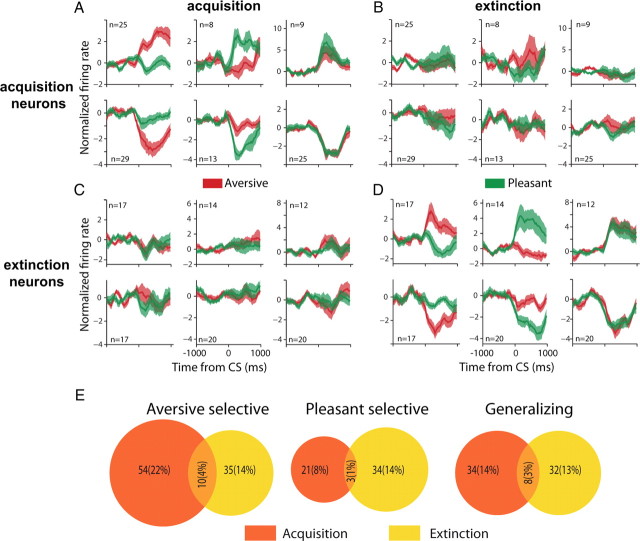Figure 6.
Distinct populations are recruited during acquisition and extinction. A–D, Population means (±SEM in shaded color) of all neurons after categorization based on whether they are aversive-selective, pleasant-selective (middle column) or generalizing (last column), and whether they respond during acquisition (A) and/or extinction (D) compared with habituation. To emphasize the richness of responses, we further separate neurons that increased their rate (top row) from neurons that decreased their rate (bottom row). Population means (±SEM) for the acquisition neurons during extinction (B) and for the extinction neurons during the acquisition (C), suggest that the response of both group is limited to either the acquisition or the extinction. Notice that selection of neurons for A, B was done without criteria for extinction, and for neurons in C, D without criteria for acquisition; hence the lack of responses suggest that neurons carry very little information for the other stage. E, Few neurons had significant tone responses during both acquisition and extinction. The area of each circle and the intersection correspond to the number of neurons in each group (exact numbers are mentioned). All three intersections were not significantly different from expected (p > 0.1, χ2), indicating that distinct subgroups participate in acquisition and extinction.

